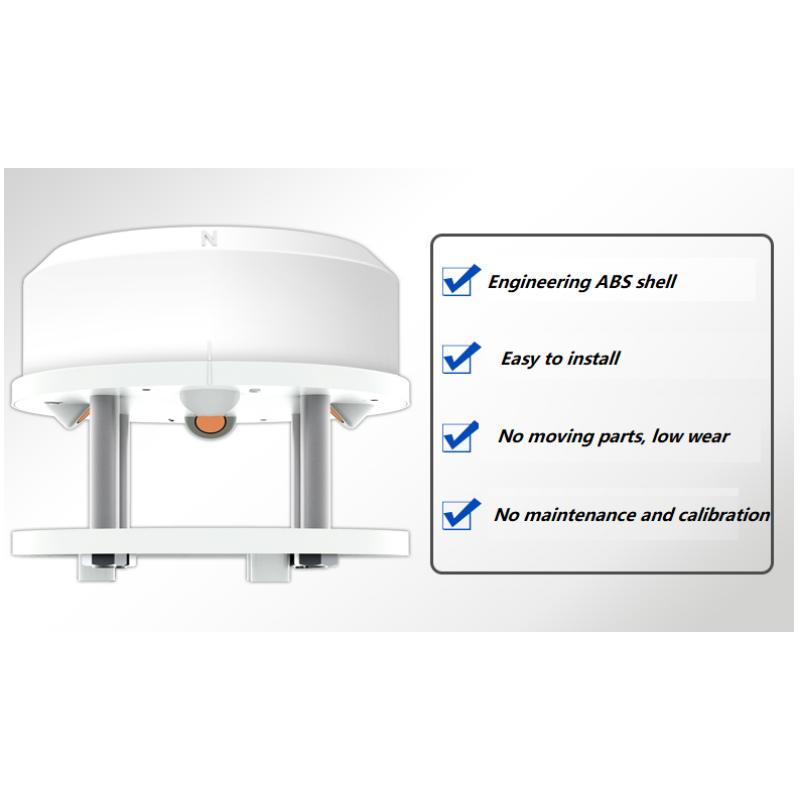Weather stations are a popular project for experimenting with various environmental sensors, and a simple cup anemometer and weather vane are usually chosen to determine wind speed and direction. For Jianjia Ma’s QingStation, he decided to build a different type of wind sensor: an ultrasonic anemometer.
Ultrasonic anemometers have no moving parts, but the trade-off is a significant increase in electronic complexity. They work by measuring the time it takes for an ultrasonic sound pulse to reflect to a receiver at a known distance. Wind direction can be calculated by taking speed readings from two pairs of ultrasonic sensors perpendicular to each other and using simple trigonometry. Proper operation of an ultrasonic anemometer requires careful design of the analog amplifier at the receiving end and extensive signal processing to extract the correct signal from secondary echoes, multipath propagation, and all noise caused by the environment. The design and experimental procedures are well documented. Since [Jianjia] was unable to use the wind tunnel for testing and calibration, he temporarily installed the anemometer on the roof of his car and left. The resulting value is proportional to the car’s GPS speed, but slightly higher. This may be due to calculation errors or external factors such as wind or airflow disturbances from the test vehicle or other road traffic.
Other sensors include optical rain sensors, light sensors, light sensors and BME280 for measuring air pressure, humidity and temperature. Jianjia plans to use the QingStation on an autonomous boat, so he also added an IMU, compass, GPS, and microphone for ambient sound.
Thanks to advances in sensors, electronics, and prototyping technology, building a personal weather station is easier than ever. The availability of low-cost network modules allows us to ensure that these IoT devices can transmit their information to public databases, providing local communities with relevant weather data in their surroundings.
Manolis Nikiforakis is trying to build a Weather Pyramid, an all-solid-state, maintenance-free, energy- and communications-autonomous weather measurement device designed for large-scale deployment. Typically, weather stations are equipped with sensors that measure temperature, pressure, humidity, wind speed and precipitation. While most of these parameters can be measured using solid-state sensors, determining wind speed, direction, and precipitation typically requires some form of electromechanical device.
The design of such sensors is complex and challenging. When planning large deployments, you also need to ensure that they are cost-effective, easy to install, and do not require frequent maintenance. Eliminating all these problems could lead to the construction of more reliable and less expensive weather stations, which could then be installed in large numbers in remote areas.
Manolis has some ideas on how to solve these problems. He plans to capture wind speed and direction from the accelerometer, gyroscope and compass in an inertial sensor unit (IMU) (probably an MPU-9150). The plan is to track the movement of the IMU sensor as it swings freely on a cable, like a pendulum. He has done some calculations on a napkin and seems confident that they will give the results he needs when testing the prototype. Rainfall sensing will be done using capacitive sensors using a dedicated sensor such as the MPR121 or the built-in touch function in the ESP32. The design and location of the electrode tracks are very important for correct precipitation measurement by detecting raindrops. The size, shape and weight distribution of the housing in which the sensor is mounted are also critical as they affect the range, resolution and accuracy of the instrument. Manolis is working on several design ideas that he plans to try out before deciding whether the entire weather station will be inside the rotating housing or just the sensors inside.
Because of his interest in meteorology, [Karl] built a weather station.The newest of these is the ultrasonic wind sensor, which uses the flight time of ultrasonic pulses to determine wind speed.
Carla’s sensor uses four ultrasonic transducers, oriented north, south, east and west, to detect wind speed. By measuring the time it takes for an ultrasonic pulse to travel between the sensors in a room and subtracting the field measurements, we obtain the time of flight for each axis and therefore the wind speed.
This is an impressive demonstration of engineering solutions, accompanied by a stunningly detailed design report.
Post time: Apr-19-2024



